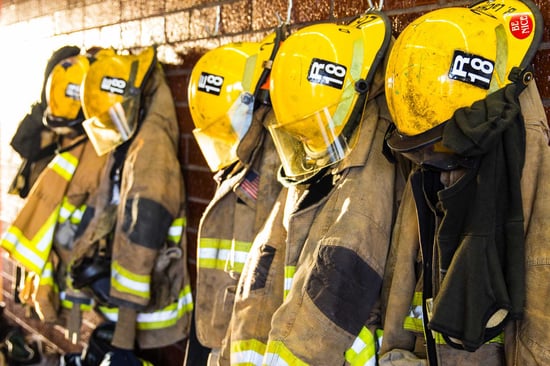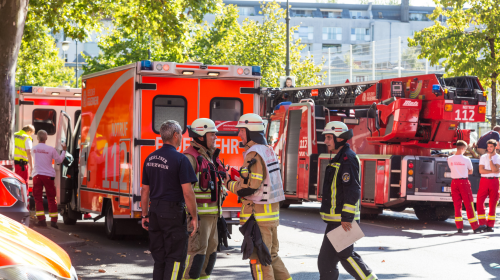 Fire and Rescue, a longstanding pillar of community safety and resilience, is experiencing significant changes as an industry. As we look ahead to 2024, it is important to understand some of the emerging trends shaping the future of this workforce. The following exploration sheds light on six pivotal developments with the fire-fighting industry and their broader implications.
Fire and Rescue, a longstanding pillar of community safety and resilience, is experiencing significant changes as an industry. As we look ahead to 2024, it is important to understand some of the emerging trends shaping the future of this workforce. The following exploration sheds light on six pivotal developments with the fire-fighting industry and their broader implications.
1. Advancements in Technology
Technological progress has brought a paradigm shift in firefighting methods. Today, integrating AI in the fire service and using data analytics in firefighting equips fire departments with the power of predictive insights. These advancements enable the preemptive identification of potential fire hazards in urban and rural areas.
Additionally, drones equipped with advanced sensors provide real-time aerial views. This technology is critical, especially in areas that are challenging for firefighters to reach. The recent advent of firefighting tools such as water-efficient nozzles and fire-resistant suits, coupled with advanced communication systems, enables faster response times and improved coordination. Innovations like smart helmets with integrated thermal imaging improve firefighter situational awareness, which is critical during rescue operations.
2. Recruitment Challenge
The aging Fire and Rescue workforce presents an impending challenge. With many seasoned professionals nearing retirement, fire departments face a dual dilemma of retaining institutional knowledge and attracting fresh recruits. Fire departments now focus on fostering relationships with educational institutions, offering scholarship programs, and even early recruitment drives to bridge this gap. Some departments also offer mentoring programs to ensure the transfer of invaluable experience from seasoned professionals to the new generation, while most departments currently offer enhanced compensation packages and training programs to retain qualified recruits.
3. Community Engagement
The digital era has amplified the avenues for fire departments to connect with their communities. Social media, webinars, and virtual workshops have become central tools to disseminate critical information and gather community feedback. This enhanced engagement facilitates preventive measures including community risk assessments and fire safety seminars. These proactive communication techniques help enhance public safety and build trust and mutual respect, positioning fire departments as community-centric entities.
4. Mental Health Initiatives
Beyond the flames and smoke, firefighters confront a myriad of emotional and psychological challenges. The cumulative stress from personal risk as well as witnessing casualties and property damage necessitates strong support mechanisms. With this in mind, fire departments are collaborating with mental health professionals to develop customized counseling programs and encouraging firefighters to utilize these services. Regular debriefing sessions, peer support groups, and workshops focusing on coping mechanisms play a pivotal role in ensuring the well-being of our brave frontline responders.
5. Safety Concerns
The ever-present risk in for the Fire and Rescue workforce requires strict attention to safety. Fire departments continuously evolve their safety protocols, integrating findings from incident analyses to refine operational procedures. Investments in state-of-the-art protective gear, rigorous training simulations, and ergonomic tools ensure firefighters are well equipped to handle emergencies. Additionally, the shift towards efficiency in scheduling, enabled by advanced software solutions, ensures firefighters receive adequate rest, further mitigating occupational risks.
6. Shifts in Service Delivery Models
Modern fire service extends beyond extinguishing fires. The diversification into additional areas, including community health support, safety audits, and emergency medical services, underscores the holistic approach of many departments. The rise of collaborative firefighting models, including mutual aid agreements and strategic partnerships with private entities, demonstrates a concerted effort to integrate resources, expertise, and labor. This integrated approach amplifies the efficiency and reach of fire services, ensuring comprehensive community coverage.
Conclusion
When considering fire service, its pivotal role in community safety and well-being is clear. Embracing technological innovations, upholding the mental and physical well-being of firefighters, reimagining recruitment strategies, and fostering community relationships are critical components in this multifaceted evolution. The overarching narrative underscores a pivotal truth: adaptation and forward thinking are essential in today’s fire service.
For more insights into the latest developments in managing the public safety workforce, subscribe to Orion’s Public Safety Workforce blogs.

